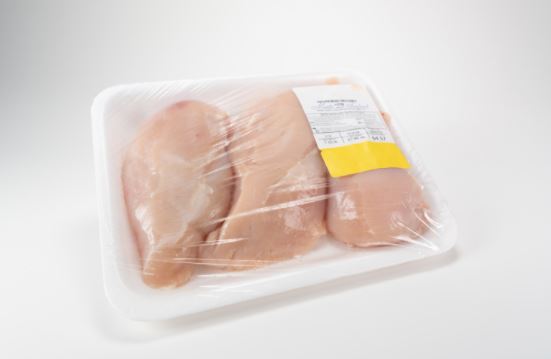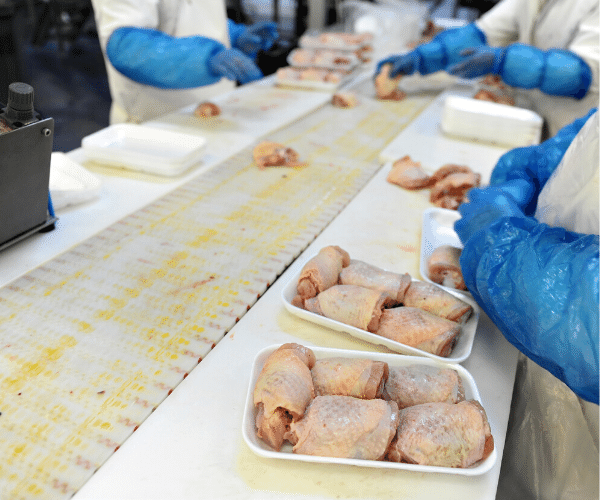Ensuring the freshness of the product – that’s the main goal of the meat packaging industry.
This subsector of the meat processing industry is composed of different areas. These areas are further classified by what specific meat product they are producing.
Ultimately, the primary concern is keeping the meat products in good condition until it reaches the intended consumers.
There are many facets that concerning meat packaging entails. On top of that, the industry uses different types of meat packaging materials depending on meat and specific products.
In today’s post, let’s take a closer look at practices behind poultry meat packaging.
The Importance of Meat Packaging in the Poultry
One of the most fundamental factors in packing meat products is the specific type of product. Meat processing and packing companies will use a particular type of packaging material that will best preserve the meat product being wrapped.
Packaging Methods
Here are the meatpacking techniques for poultry products.
Packaging Chicken and Other Poultry Products
Because of its perishable nature contributed by a high sensitivity to spoilage and rapid growth of pathogenic microorganisms, packing poultry meat has always challenged manufacturers.

The main goal when packing poultry is to extend its shelf life.
As such, food preservation innovations are undertaken.
Methods such as modified atmosphere packaging and vacuum packing are increasingly being adapted for retail sale and distribution of poultry meat products.
The poultry industry utilizes the following meat packaging methods:
Vacuum Packaging
This packaging method uses either rigid or flexible containers. All air has been substantially removed from the containers before sealing them. Vacuum packaging is a subcategory of packing in a modified atmosphere environment. In essence, this is eliminating normal air from within the package.
Gas packaging is referred to as adjusting the proportionate amounts of the gases that encompass a standard atmosphere. This type of meat packaging is divided into two classifications.
The industry has seen an increase in the use of modified atmosphere packaging. Modified atmosphere packaging is a result of consumer demands for refrigerated food products with extended shelf life.
The concept behind this meat packaging idea is replacing the air in this package with a fixed gas fusion.
Active and Intelligent Packaging
This is one of the latest developments in packing poultry products. It involves a series of techniques where the package itself is involved in maintaining the casing’s internal temperature to extend the product’s shelf life.
Also referred to as smart or interactive meat packing, active and intelligent packaging is comprehensively planned to anticipate internal and external fluctuations.
When these internal and external factors are detected, the packaging is programmed to adapt by altering its own attributes or properties.
This packaging technique utilizes carbon dioxide, oxygen scavenging, ethylene, and placing sachets with moisture-absorbent features. Some other active and intelligent packaging techniques include incorporating antimicrobial agents into the plastic films, the sheets, or the polymer surface coatings.
Controlled Atmosphere Packaging
This type of packaging technique refers to maintaining a controlled atmosphere within the packaging where the gases are either removed or added. The purpose of removing or adding the gases is to maintain the desired balance within the packaging.

In this type of packing technique, the storage vessel or the bulk bin is practically impenetrable.
No other material, agent, or substance can penetrate the packaging.
Active Packaging Indicators
Several indicators (for temperature, package integrity, microbial spoilage, product authenticity, physical shock, etc.) can provide information on the food product quality.
Aside from the headspace gases within the package and the packaging itself, the storage conditions also influence the quality of the food product.
Some of these indicators do not have a direct interaction with the product, while obviously others do. These indicators are referred to as “intelligent packaging.”
Some concepts are commercially accessible. Aside from the availability, the uses and features of these concepts continue to increase.
New systems behind freshness and leak indicators are already patented. This means that consumers can expect it to be commercially available in the near future.
Active Packaging Scavengers
This packaging technique entails using ingredients meant to remove, eliminate, or absorb certain substances. Some of these substances you don’t want in contact with the food product or the food package’s interior are ethylene, moisture, blot, and oxygen.
The components of the active packaging technique influence the shelf life of the food product. Some commercial active packaging scavengers are based on iron powder.
When iron comes into contact with oxygen, it produces iron oxide. Organo-metallic and non-metallic compounds are also developed.
Using oxygen scavengers have value in select poultry products. On top of that, the addition of active packaging scavengers in poultry meat packaging, along with the physical barrier package, is beneficial.
Doing this practice means you can maintain almost 0% oxygen level within the package.
Active Packaging Emitters
This active packaging technique entails the containment or production of substances. In particular, these substances intend to migrate either into the headspace of the packaging or into the food product itself.
The purpose is to obtain a technological atmospheric effect between the packaging and the food product, such as biocides, flavorings, and food additives. The consumer subsequently ingests the active packaging emitters along with the food products.
Antimicrobial Agents
The integration of antimicrobial agents with the packaging materials or packing films can prevent the development of undesirable microorganisms.
Utilizing antimicrobial agents can also serve as a foundation for the release of preservatives. This meat packaging technique is regarded as one of the most capable types of the active packaging concept.
Out of all the active packaging uses, the antimicrobial agent integration practice receives the most considerable attention.
This is due to the fact that this system can:
- Prolong the bacterial intermission phase
- Slow down the development of microorganisms
- Extend the shelf life of the food product
- Maintain overall food safety
Generally, the basis of antimicrobial meat packaging is to produce a controlled compound diffusion with the food product. Partitioning, which prevents the penetration of unwanted microorganisms, is also one of the purposes of this type of packing technique.

Biopolymers
These polymer films come from natural sources such as plant and animal materials.
These natural sources effectively reduce the amount of wasted synthetic polymer.
Using biopolymers is advantageous for several reasons. One of the primary benefits is it can reduce the demand for petroleum-based meat packaging. It is also utilized as an agricultural renewable resource.
Biopolymers also serve as carriers to provide shelf-life extenders. These include antioxidants, antimicrobials, and biodegradable features.
Edible Films
Edible films are an active part of the meat product. From a legal point of view, edible films are classified as a foodstuff, along with the food products packaged in the film. This means that the edible films meet the legal prerequisites for food in general.
Edibility, biodegradable features, aesthetic appearance, barrier properties, and biocompatibility are some of the key benefits provided by edible films and coatings in poultry meat packaging.
